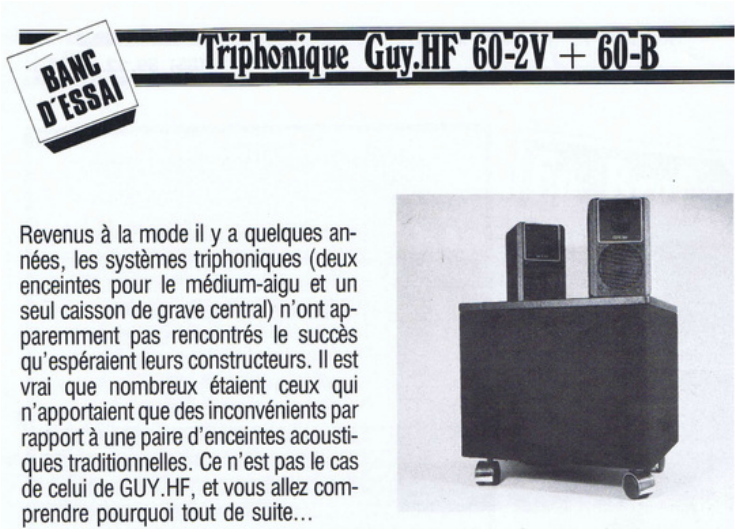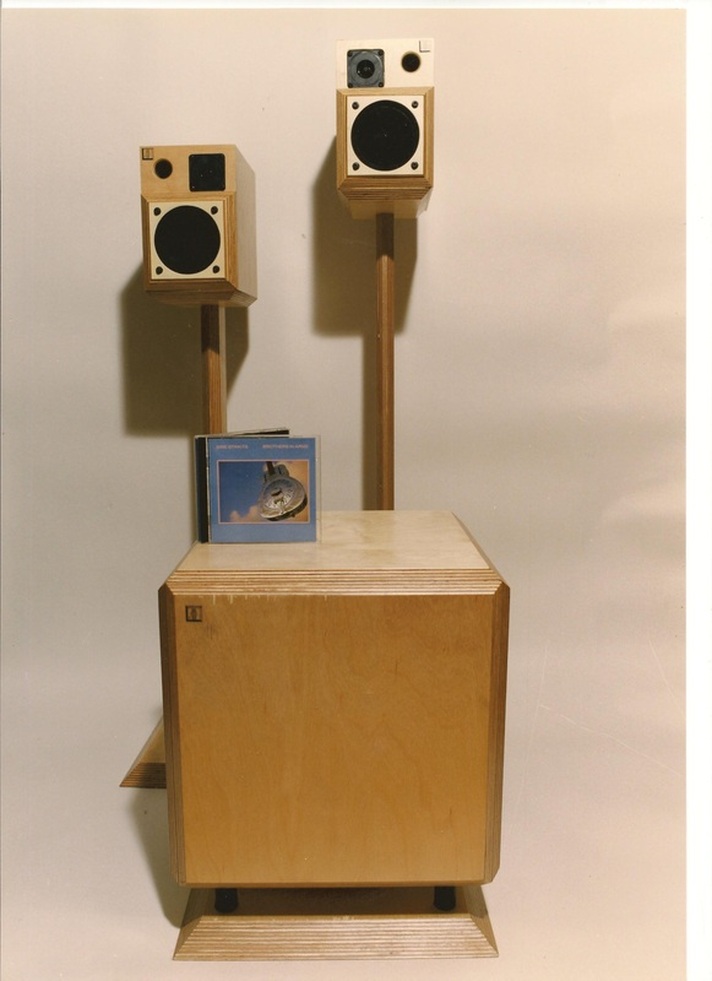|
Behind this simple logo hides more than 70 years of expertise in building modern furniture for famous designers of the time, some of the first TV cabinets and later on specialising in speaker cabinets for the most prestigious names of the French HiFi scene like Elipson, Jean-Marie Raynaud, 3A, A2T, Audax, AudioAnalyse, Audio Reference, Confluence, Elipson, France Acoustique, Mercuriale, Phonophone, Siare and for JM Lab/Focal, a collaboration over 30 years, Focal eventually buying the business in 2007. What an achievement for Emile, the father, and his son Jean-Paul Guy from the tiny city of Bourbon-Lancy, home to just over 5000 people but famous from Antiquity for its spa. GUY.HF is only one of two companies listed on Wikipedia in the town! Jean-Paul Guy who I have known since 1983 has benefited from growing up in a rich cultural environment because of the trendy original clients of his Dad, like the famous interior designers Leleu Marcel Gascoin and Maxime Old. Jean-Paul is a serious melomane and a great collector of modern art with a collection of over 600 pieces which he occasionally lends to museums for specific exhibitions. An hedonist, he loves all the finer things in life... He is also a speaker designer in his own right and was developing some products very similar to my Microphase around the same time, hence probably why he accepted to build our products. As proof, you will find below some extracts of his catalogues, some products being sold under the GUY.HF brand and some more elaborate ones under the "Natural Sound" brand. I find interesting in retrospect that we were all trying to replicate the 4240 from Elipson on a smaller scale and for less money. In many ways, most of these systems actually achieved this objective with very limited means sometimes and as a result, these companies didn't stand the test of time. But most importantly, GUY.HF and Jean-Paul were instrumental in helping these small outfits getting manufactured properly at a price which leaved them with enough margins as well as staying competitive in the retail market. Jean-Paul was also very helpful in streamlining the manufacturing process by advising us on ways to save money without too much compromise on the final auditive and visual results.Un grand merci! All this quality manufacture was achieved without any CNC machines which arrived at GUY.HF only in 1987 when production reaches over 15,000 speakers. A second machine was bought in 1999 to accommodate the big success of the Utopia range from Focal representing half the production and all this achieved with less than 30 people! One skill that GUY.HF had and still has is the quality of their varnishes, perfectly applied and never too glossy in the case of the clear finish. Lacquer was subcontracted to a local company Segaud, which was later bought over and integrated into the larger premises acquired in 2003. If you have ever seen a Focal Grande Utopia in the flesh, then you will have experienced both the cabinet making and the lacquer expertise of Jean-Paul's team! Over the next few weeks, I will go into each of the speaker companies that GUY.HF has manufactured over the years, and you will surprised to find out that even reputable companies outside France were clients, like Luxman, Toshiba, Sanyo, Fisher, Philips and Telefunken!
I will be forever grateful to have been associated with GUY.HF and still counting Jean-Paul as one of my long standing friends. Stay tuned for more French Vintage Speakers!  As mentioned in our "7 design principles", we think the midrange driver should be as close as possible to a full range unit. However, if you are trying to keep the cabinet small and, consequently, the WAF high, then you will need a dedicated driver for the lower octaves of the spectrum. Hence, our SWS subwoofer design... The idea was to have a modular offer: one could buy a pair of satellites as bookshelf speakers, and then later, when money and/or space become available you could add the subwoofer(s) to your existing speakers. Interestingly enough, very few customers took advantage of this feature. Most bought either the satellites on their own, or the full system. So, to come back to the design of the subwoofer, it was to be like a pedestal to the SATs and we decided early on that the driver would be invisible, as we wanted the SAT to be the main design feature. So, we were constrained to a 200x200mm envelope and between 700 and 900mm height to bring the SATs to ear level. The SATs themselves would be used horizontally in this configuration. This was made possible by the fact that the tweeter was offset from the midrange and once horizontal, the dispersion pattern would still be good. This is confirmed by listening tests: these speakers have an excellent image way beyond their own position, and providing quite a wide range of listening positions. The SATs are 150mm high, then it leaves us between 550 and 750 mm for the subs. Once the driver was chosen and we could plug its parameters into our box calculation, we ended up with a 600mm high cabinet. The driver firing down would then be at the mercy of the floor material, and we didn't like that, hence the special socle with a pattern to match the angled design of the satellite, adding some extra stability to the whole unit. That was going to be tested in years to come by the toddlers in our household... The driver was originally an SEAS 17cm with an extra rubber treatment on the membrane. Further down the track, we used a SIARE unit. The filter was again a Linkwitz-Riley with an upper frequency of 100hz L=25mh (air core), C=100uF (made out of 4x25uF in parallel for better quality. The final response being 30-100Hz within 1dB, thanks to the mechanical feedback of the base, close enough to "laminate" the air, hence linearising the response. This is quite an amazing result from a 17cm driver. The integration with the satellite is seamless and also prevent the satellite to generate too much distortion at the low end. The only drawback is obviously a little loss of efficiency as a complete unit, but still in the 90dB range. Later on, we designed a central subwoofer, starting the triphonic fashion, way before Bose entered the market...but this is another story for a later post... |
AuthorBorn in France, well travelled, relocated to Sydney in 1997. Archives
July 2023
Categories
All
|


















 RSS Feed
RSS Feed
